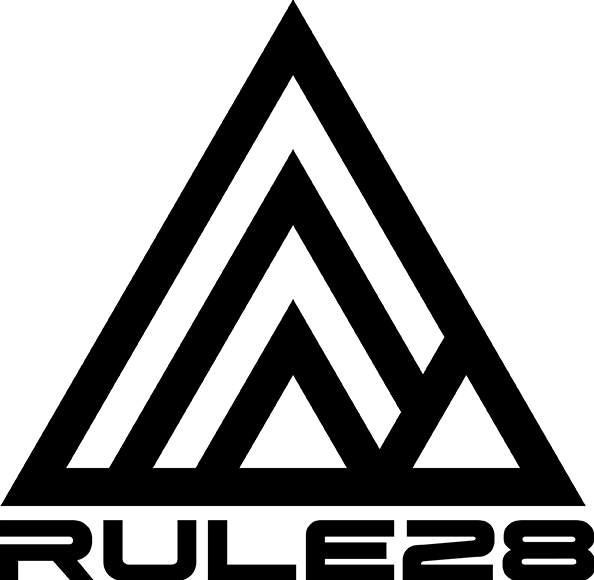Swift Pro Cycling Rider, Andy Turner explains how fuel up to make the most of your ride.
Pre-ride meals
If you’ve got a long or high intensity session on the bike planned, then fuelling properly beforehand is of the upmost importance. Ideally, you’ll want to have your pre-ride meal 3-4 hours before your training session to avoid gastric discomfort and bloating.
Generally, when it comes to fuelling a training ride, carbs are king. Over longer durations at lower intensities, of body fat as an energy source increases, but carb stores are also used. The amount of fat you are able to burn depends on fitness levels, adaptation to using fat as a fuel source, temperature and other factors.

A good starting point is to aim for around 60 grams of carbs in your pre-ride meal. With training of the gut (a topic for another post), this amount can be increased without causing bloating or other issues. An ideal meal before a long training session can be something like rolled oats, mixed nuts & seeds plus some dried or fresh fruit, either done as overnight oats or porridge with your choice of milk or water. This contains a good amount of slower release carbs that should keep you well fuelled for longer sessions, especially if they involve some higher intensity efforts. For any session longer than 2 hours you will want to increase your food intake riding. For a low carb option, an omelette with avocado and mixed seeds is a nice high protein meal.

For high-intensity sessions of over an hour, or if you’ve got limited time to fit your meal in before training, a faster release carb and lower fibre/fat/protein option is a good idea. Toast with jam/honey/peanut butter etc. is a quick and easy option to make. Don’t worry about having wholemeal or brown bread, white bread is ideal for quick release carbs. Additionally, an energy bar might be the easiest and most practical way of getting the fuel in beforehand. For really short sessions, such as a quick HIIT session first thing in the morning, don’t be afraid to have an energy gel within the 30-minute period prior to training. You don’t want to be doing HIIT without carbs!

Another part of pre-ride fuelling is caffeine. There have been many studies on caffeine as an ergogenic aid with the benefits ranging from increased fat metabolism (useful for fasted sessions), reduced perception of effort as well as improving mental alertness. That last part being particularly useful if you’re training first thing in the morning or after getting back from work! In terms of the amount, some people react more to caffeine than others. 60mg, the equivalent of an espresso, is normally enough for most people and is best taken around an hour before exercise

The most important thing to remember is that your pre-ride meal will change based on the session that you are doing. Some training requires more carbs, some fewer. Some need fast release, some slow. Fuel for the work required*
*Impey, S. G., Hearris, M. A., Hammond, K. M., Bartlett, J. D., Louis, J., Close, G. L., & Morton, J. P. (2018). Fuel for the work required: a theoretical framework for carbohydrate periodization and the glycogen threshold hypothesis. Sports Medicine, 48(5), 1031-1048.
Assuming you’re well fuelled before starting your session, muscle glycogen stores will generally only get you through 60-90 minutes of exercise before you start needing to consume extra. What you are able to consume will depend on a lot of things: how much carbohydrate you can tolerate and functionally use, what intensity you are riding at and your personal taste preference.
Grams of carbs per hour has been found to be the best way to measure fuel intake, regardless of the relative weight of the person. For longer, lower intensity rides, 40g/hour is a good starting point. Because of the lower intensity, it is easier to eat more ‘real’ foods such as small sandwiches or fruit and nut bars.

For higher intensity sessions, you’ll want between 60-120g/hour of carbs! Some people won’t need to consume that many, and those that do will have to gradually up their intake through training to be able to tolerate that level of consumption. During higher intensity rides it may be more difficult to eat, chew and digest foods such as bars with nuts and fibre in them. Energy gels may be viewed by some as race only food, but they also have their place in training. It’s always good practice to try out your race fuelling strategies in training. Isotonic gels are a great way to get ~20g carbs into the system without additional fluid.

Energy drinks are probably the easiest option as they contain between 40-100g carbs per 500ml bottle. Energy drink powders are the more cost effective than buying drinks directly however, you should take care to use the right amount of the mix to water or the drink won’t have the right carb/water/salts balance and could hinder performance.
For longer, varied sessions, you’ll want a mix of on-bike nutrition. If you have, say, a 4 hour ride with a hill effort halfway and some intervals in the final hour, you’ll want a mix of real food and quick carbs: a good carb full meal beforehand, a bar at the 1 hour mark along with water for the first half of the ride, a gel within 20min of the climb effort, a bar afterwards, energy powder in the second bottle for the last half of the ride and another gel for before the intervals. This would equate to approximately 180g of carbs (100g in the energy drink) which should be adequate for a low intensity ride with some efforts mixed in.

Fluid intake will be another factor that varies a lot depending on the ride, conditions and the individual. When it’s colder you won’t need to drink as much to avoid dehydration, but you will still need fluids to process the carbs you consume. 300ml/hour is probably at the lower end of what you want to be consuming. As the intensity or temperature goes up, so will sweat rate. This will vary a lot but can be measured easily at home on the turbo. Weigh yourself before your ride without kit, ride for an hour then weight yourself without kit again. Now subtract your post ride weight and the amount of fluid you drank during the session from your pre ride weight. That will give you your sweat rate for that temp/intensity. Sodium loss will be a constant per ml of fluid lost and can be measured in a lab. However, on a hot day it’s easy to see if you’re a salty sweater! Between 500 - 1000ml/hour should be tolerable for most people. It’s important to remember to consume enough sodium alongside this. Most electrolyte tabs don’t provide anywhere near enough salt, especially if you have a fairly unprocessed food diet with limited added salt. To combat this, a couple of grinds from the salt grinder in the bottle will help. I’d recommend putting some squash in with that though for taste!

It’s important to remember that all of these are just general guidelines; everyone will be different and different sessions require different on bike nutrition. There is a lot of trial and error involved in finding a fuelling strategy that works for you, but here are some great starting points to help you get your on and off bike nutrition sorted.






Share:
Caffeine - A Deep Dive
Fuelling Without Bars and Gels